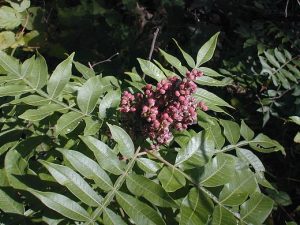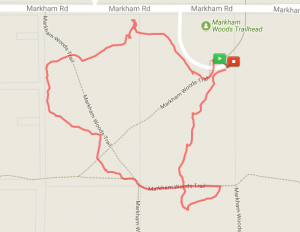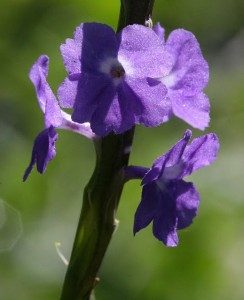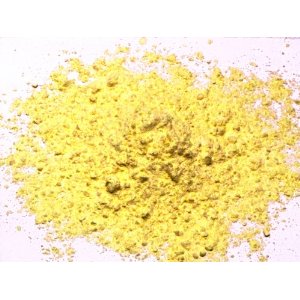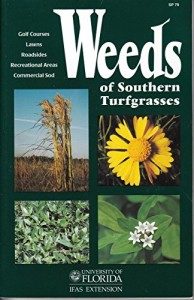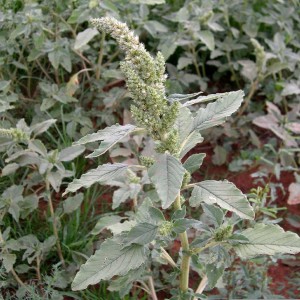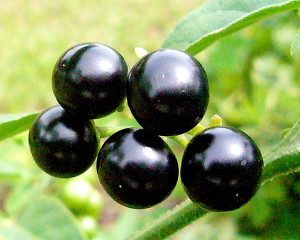His name was Will Endres and he was a North Carolina herbalist…Poison ivy, foraging classes, horse mint, ground cherries, foraging USBs, the Green Deane Forum, Southern Wax Myrtle, https://www.eattheweeds.com/newsletter-475-september-21-2021/474
https://www.eattheweeds.com/newsletter-474-september-14-2021/
Chance happens in foraging.
Coralwood, Kudzu, Foraging Classes, Favolus Mushrooms, learning edibles, foraging USB, the Green Deane forum, aroma and cyanide
473
https://www.eattheweeds.com/newsletter-473-september-7th-2021/
It would be convenient if Pindo Palms fruited regularly.
Pindo palms seeds, Canna, Foraging classes, Ghost Pipes, Labor Day, Tallow Plums
472
https://www.eattheweeds.com/newsletter-472-august-31-2021/
Are there any Shiitake mushrooms locally?
Train Wrecker, Chicken of the Woods, Foraging Classes, Dogwood, Hackberries, Kudzu, foraging DVDs and the Green Deane Forum
471
A white Water Hyacinth was seen recently in the Little Econ River east of Orlando.
https://www.eattheweeds.com/newsletter-471-august-24th-2021/
Water hyacinth, Foraging Classes, Wild grapes, Tumble Weed, Goldenrod, Swamp Mallow, Foraging USBs, the Green Deane forum, Donations
470
https://www.eattheweeds.com/newsletter-470-august-17th-2021/
One way northern and southern climates differ is the greater array of non-native species that are constantly being imported and or found in southern climates.
Torell’s Eucalyptus, Chaya, Guavas, Java Plum, Ground Cherries, Coco-plums, Natal Plum, Dragon Fruit, Podocarpus, Persimmons, Foraging USBs, Green Deane Forum, Donations, the Two-Leaf Nightshade
469
Plants remind one that weather is less dependable than we might think.
Jambul, Chanterelles, Cactus Fruit, Sugarberry, Doveweed, Foraging Classes, Isabelline, Foraging USBs, the Green Deane Forum, and Donations
https://www.eattheweeds.com/newsletter-469-august-10-2021/
468
https://www.eattheweeds.com/newsletter-468-august-3-2021/
Yes, there are land crabs in Florida and the rest of the gulf coast.
Land crabs, Foraging classes, Grapes, Podocarpus, Horsemint, Saw Palmetto, Goldenrod, Russian thistle, USBs, Green Deane Forum, donations.
467
Candyroot, Foraging Classes, Wild Grapes, DVDs, Green Deane Forum, Donations, Saw Palmetto, Barnyard Grass, Brookweed
Is it the season or is it the rain?
https://www.eattheweeds.com/newsletter-467-july-27th-2021/
466
This summer’s foraging classes at Putney Farm in Honea Path South Carolina are now history
Foraging in South Carolina, American Beech, Sourwood, Birches, Moringa, foraging Classes, Sumac, Country Wine, Saw Palmetto, foraging USB, Green Deane Forum, and Donations
https://www.eattheweeds.com/newsletter-466-july-20th-2021/
465
Newsletter #465, July 13th, 2021
Kousa Dogwood, Sassafras, Wild Carrots, Birches Apples
Apples, Mushrooms, Podocarpus, Foraging Classes, Knotweed, Cactus, Peppervine, Foraging DVDs, the Green Deane Forum, donations,
464
In real estate it is location, location, location.
Blue Indigos, Milk Caps, Jelly Fungus, Strawberry Guava, Foraging Classes, Pandamus Grass, Smilax, Foraging DVDs, Green Deane Forum and Donations
https://www.eattheweeds.com/newsletter-464-july-6th-2021/
463
Podocarpus are not fickle but they are slightly unpredictable.
Podocarpus, Java Plum, Stillwater Canoe, Mushrooms, Foraging classes, Atamasco Lily, foraging USBs, the Green Deane Forum, and donations
https://www.eattheweeds.com/newsletter-463-june-29th-2021/
462
If you think you are not allergic to poison Ivy …
https://www.eattheweeds.com/newsletter-462-june-22-2021/
Poison Ivy, Socks and Pythons, Black Cherries, Pokeweed, Yuck, Foraging Classes, Cashews, USBs, the Green Deane Forum, Donations.
461
Sycamores, bacteria, Foraging Classes, Beautyberries, USBs, the Green Deane Forum, Donations, Sweet Acacia
Sugar maples are famous for their syrup but how many species of trees can you actually tap?
https://www.eattheweeds.com/newsletter-461-june-15th-2021/
460
What can be said about the Jambul Tree?
Jambul, Foraging Classes, Maypops, Pindo Palms, Chaya, Foraging USBs, Green Deane Forum, Donations,
https://www.eattheweeds.com/newsletter-460-june-8th-2021/
459
https://www.eattheweeds.com/newsletter-459-june-1st-2021/
For more than 60 years I have associated Lilacs with June.
Lilacs, American Lotus, Foraging Classes, Chinese Tallow Tree, Eastern Hemlock, foraging USBs, the Green Deane Forum, Donations, toxic Atamaso Lilies.
This week’s debatable question is “can you eat elderberries raw?”
Elderberries, Two-leaf Nightshade, Foraging Classes, Morning Glories, foraging USBs, the Green Deane forum, donations, Jack in the Pulpit
https://www.eattheweeds.com/newsletter-458-may-25th-2021/
457
https://www.eattheweeds.com/newsletter-457-may-18th-2021/
Acres of wild blackberries….
Blackberries, foraging is illegal, Sea Blite, Foraging classes, Sea Purslane, foraging videos on USBs, the Green Deane Forum,
456
The Bunya Bunya and Norfolk Pine are closely related.
Bunya Bunya, Norfolk Pine, Allergic reactions, foraging classes, Chickasaw Plums, Blue Mushrooms, cattails, foraging videos on USBs, and the Green Deane Forum,
https://www.eattheweeds.com/newsletter-456-may-4th-2021/
455
https://www.eattheweeds.com/newsletter-455-april-27th-2021/
Is it edible?
Evening Primrose, False dandelions, Yucca, Foraging classes, foraging videos on USBs, the Ghreen Deane Forum,
454
https://www.eattheweeds.com/newsletter-454-april-20-2021/
Pineapple Guava, Hercule’s Club, Usnea, Miner’s Lettuce, Foraging Classes, Paper Mulberry, Where do you forage, Foraging Videos, the Green Deane Forum, Brookweed,
Perhaps no ornamental has been championed as much as the Pineapple Guava
453
https://www.eattheweeds.com/newsletter-453-april-13-2021/
It’s about time to make a prediction.
Ringless Honey Mushrooms, Eastern Coral Bean, Foraging Classes, Watercress, Marlberries, Foraging Videos, Green Deane Forum, Donations,
452
https://www.eattheweeds.com/newsletter-452-april-6th-2021/
On the east coast of my native state of Maine about seven miles south of Portland is the Town of Scarbrough.
Paper Mulberries, Foraging Classes, Deer Mushrooms, Hercules Club, USB Videos, Green Deane Forum, Donations.
451
Which tree has more life, the Mulberry or the Moringa?
Mulberry, Atamasco lily, Foraging Classes, Blueberries, Huckleberries, Watercress, Foraging USBs, the Green Deane Forum, Smilax,
https://www.eattheweeds.com/newsletter-451-march-30th-2021/
450
https://www.eattheweeds.com/newsletter-450-march-23-2021/
wisteria, Cherokee Rose, Deer Mushrooms, Foraging Classes, Hydrilla, Garlic, video USBs, Green Deane Forum, Donations
The weather may be chilly still it’s a hot time of year for foraging.
449
It’s not June that’s busting out all over but rather Vacciniums, mostly blueberries.
Vacciniums, groundnuts, evening primroses, foraging classes, video USBs, Pawpaws, Florida Pennyroyal,
https://www.eattheweeds.com/newsletter-449-march-16-2021/
448
The Greeks were perhaps the first people to call things what they were such as “yoke mate” for spouse or “shiny leather” for the Reishi mushroom.
Bottlebrush tree, Candyroot, Loquats, Mulberries, Foraging classes. USB, the Green Deane Forum
https://www.eattheweeds.com/newsletter-448-march-09-2021/
447
Fireweed, Latex Strangler Vine, Foraging Classes, Clover, Bacopa, Violets, USBs, Cashews
https://www.eattheweeds.com/newsletter-447-02-march-2021/
Fireweed/burnweed has a flavor chefs love.
446
https://www.eattheweeds.com/newsletter-446-feb-23-2021/
Loquats, Loquat wine, Wild Garlic, Foraging Classes, Chickweed, Lamb’s Quarters, Toxic Butterweed, Bulrush, USBs, and the Green Deane Forum,
While driving around have you seen a tree with large, dark green leaves and yellow fruit?
445
https://www.eattheweeds.com/newsletter-445-feb-16-2021/
Can you eat red mangroves?
Mangroves, foraging classes, plantagos, Passion Flowers, Black Medic, USBs&DVDs, Alligator pendent, and the Green Deane Forum
444
https://www.eattheweeds.com/newsletter-444-february-9th-2021/
Young and tender describes them best: Elm leaves we nibbled during our foraging class in Gainesville Saturday.
Elms, Eastern Red Bud, Foraging Classes, Ragweed, Cattails, Coquina, Mole Crabs, USBs & DVDs, the Green Deane Forum, nickerbeans, alligator tooth.
443
https://www.eattheweeds.com/newsletter-443-february-2-2021/
If you look across local lakes now you will see ruby red splotches on the horizon.
Maples, Drymaria, Foraging Classes, Seaweed, USBs & DVDs, the Green Deane Forum, Jabuticaba,
442
https://www.eattheweeds.com/newsletter-442-january-26-2021/
Violets, False Hawk’s Beard, Foraging Classes, Stink Horns, Weed Seeds, USB & DVDs, the Green Deane Forum
A common blossom that’s easy to identify is the wild violet.
441
Our mighty stinging nettles are up.
https://www.eattheweeds.com/newsletter-441-january-19-2021/
Stinging nettles, Sow Thistle, Foraging Classes, Chickweed, Wild Geraniums, Silverthorn, USBs & DVDs, and the Green Deane Forum
440
The Western Tansy Mustard is one of our shortest-lived wintertime forageables.
Western Tansy Mustard, Eastern Gamagrass, Begonias, Foraging Classes, Spiderworts, USBs&DVDs, the Green Deane Forum,
https://www.eattheweeds.com/newsletter-440-january-12th-2021/
439
Our tasty winter green chickweed is in its glory.
https://www.eattheweeds.com/newsletter-439-january-05-2021/
Chickweed, Sheep Sorrel, Oxalis, Latex Strangler Vine, Pellitory, Black Medic, Geranium, Horsemint, Henbit, Shepherd’s Purse, Plantain, Wild Mustard Radish, Canna, Cattails, Foraging Classes, Botany Builder #12, USB & DVDs, and the Green Deane Forum
438
What difference can 172.4 miles make?
https://www.eattheweeds.com/newsletter-438-december-29th-2020/
Goji berry, Sea Rocket, Black Medic, Harlequin Glorybower, Foraging Classes, Nagi Tree, Glasswort, USBs & DVDs, the Green Deane Forum
437
At what point does a “wild” plant become an edible plant?
https://www.eattheweeds.com/newsletter-437-december-22-2020/
Florida Thatch Palm, Sleepy Hibiscus, Cereus, Bauhinia, Foraging Classes, Cockroach Berry, Silverthorn, USBs and DVDs, the Green Deane Forum
436
https://www.eattheweeds.com/newsletter-436-december-15th-2020/
Usually we see Christmas Berries about April.
Christmas Berries. Foraging Classes, Sow Thistle, Mustards & Radishes, Black Calabash, USBs & DVDs, and the Green Deane Forum
435
Our first sighting of one of our winter comestibles happened Saturday
Chickweed, Ringless Honey Mushrooms, Foraging Classes, Henbit, Wild Geraniums, Peltate, Is this Plant Edible? foraging USB & DVDs, the Green Deane Forum,
https://www.eattheweeds.com/newsletter-435-december-08-2020/
434
https://www.eattheweeds.com/newsletter-434-december-01-2020/
Winter Podocarpus, Acerola, Foraging Classes, Chufa, Redflower Ragweed, Weeds of Southern Turf Grasses, foraging USBs &DVDs, the Green Deane Forum.
Actually there’s nothing wrong with the photo per se, it’s the time of year that’s different.
433
https://www.eattheweeds.com/newsletter-433-november-24-2020/
Every April of so we go looking for Wild Garlic…
Wild Garlic, Big Caltrop, Foraging Classes, Ghost Pipes, Balm of Gilead, USBs & DVDs, Green Deane Forum
432
We are shifting mushrooms seasons from terrestrial to trees or ground to wood.
Lion’s Mane, Gooseberries, Foraging classes, Sea Purslane, Foraging in urban areas, USB and DVDs, the Green Deane forum
https://www.eattheweeds.com/newsletter-432-november-17th-2020/
431
https://www.eattheweeds.com/newsletter-431-november-10-2020/
While looking for the yellow-blossomed Dandelions…
Dandelions, Mustard and radishes, Plantains, Foraging Classes, Brazilian Pepper,Skunk Vine, USBs & DVDs, the Green Deane Forum
430
https://www.eattheweeds.com/newsletter-430-november-3-2020/
During our foraging class in West Palm Beach Sunday we saw inch-high sprouts of the winter edible Pellitory.
Pellitory, Poor Man’s Peppergrass, Foraging classes, Seaweed, Jelly Fish, Southern Wax Myrtle, Stinkhorns, Jack Ol Lanterns, USBs & DVDs, the Green Deane Forum.
429
https://www.eattheweeds.com/newsletter-429-october-27-2020/
During our foraging class Sunday in Gainesville we dug up a couple of Winged Yams.
Winged Yams. Tropical Almond, Foraging Classes, Roses, Bay Leaves, Citron Melon, the Honeycomb Mushroom, USBs and DVDs, the Green Deane Forum.
428
https://www.eattheweeds.com/newsletter-428-october-20-2020/
Country Wine, Foraging Classes, Chinese Tallow Tree, Caesarweed, Cambium, USBs and DVDs, the Green Deane Forum, and Ceibas
Three reasons prompted me to resurrect my wine-making past.
427
Mother Nature has her own schedule.
Ringless Honey Mushrooms, Golden Rain Tree, Foraging Classes, Dragon Fruit, Partridgeberry, DVDs & USB, the Green Deane Forum
https://www.eattheweeds.com/newsletter-427-october-13-2020/
426
Fall is a good time to write about Yellow Pond Lilys.
Yellow Pond Lilys, Persimmons, Monstera deliciosa, Turkey Tails, Foraging Classes, Sida, sumacs, two sages and a pusley, USBs and DVDs, and the Green Deane Forum
https://www.eattheweeds.com/newsletter-426-october-6-2020/
425
https://www.eattheweeds.com/newsletter-425-september-29th-2020/
The question isn’t whether Reishi mushrooms grow in North America.
Reishi mushrooms, Wax Myrtle Berries, Foraging Classes, American Beautyberries, Sea and Wood Oats, Ground Cherries, Anoles, Chestnut Bolete, DVDs and USB, the Green Deane Forum.
424
Horsemint is in season and easy to find.
Horsemint, Crowfoot Grass, Foraging Classes, Apples, the aroma of wild food, plant pronunciations, foraging DVDs and USB, the Green Deane Forum,
423
https://www.eattheweeds.com/newsletter-423-september-15th-2020/
No one told the Ringless Honey Mushrooms it isn’t November.
Ringless Honey Mushrooms, the Syzygiums, Foraging Classes, Heartwing Sorrel, Bacopa, Groundnuts, USB and DVDs, and the Green Deane Forum
422
https://www.eattheweeds.com/newsletter-422-september-8th-2020/
Pindo and Queen Palms, Canna, Indian Pipes, Foraging Classes, Scrumping, USBs and DVDs, the Green Deane Forum.
421
In the backwoods of Maine where I grew up Dogwoods were small.
Perennial Peanut, Kousa Dogwood, Sugarberry/Hackberry, Foraging Classes, Ground Cherries, foraging DVDsUSBs, the Green Deane Forum.
https://www.eattheweeds.com/newsletter-421-september-01-2020/
420
Gracie gets the prize.
Black Trumpets, Persimmons, foraging classes, Kudzu, Wild Apples, the toxic False Parasol, foraging USBs and DVDs, and the Green Deane forum.
https://www.eattheweeds.com/newsletter-420-august-25th-2020/
419
Last Sunday’s foraging class — Haulover Canal — was a hot one with a lot of walking.
Tallow Plums, Foraging Classes, Goldenrod, Saw Palmettos, White Spiderling, Sumac, foraging DVDS & USBs,
https://www.eattheweeds.com/newsletter-419-august-18th-2020/
418
https://www.eattheweeds.com/newsletter-418-august-11-2020/
There is probably some Syzygium in your kitchen.
Bunya Bunyas, Syzygiums, Chanterelles, Cactus Tuna, Sugarberry, Doveweed, Isabelline, foraging DVDs and USB, the Green Deane Forum…
417
https://www.eattheweeds.com/newsletter-417-august-04-2020/
Wild mints can be prima donnas.
Horsemint, Russian Thistle, Foraging Classes, Goldenrod, Swamp Mallow, foraging videos, Green Deane Forum, Pindo Palms
416
With apologies this newsletter is starting with the foraging class schedule.
Wild Grapes, foraging class schedule, Pepper Vine, Podocarpus, Country Wine Update, Sumacs, Saw Palmettos, Foraging Videos, Green Deane Forum, Black Gum
https://www.eattheweeds.com/newsletter-416-july-29th-2020/
415
July is passing and that means many different things to foragers depending upon your location on the rotation.
Forked-tendril grapes, pindo palms, cactus, foraging classes, the false roselle, barnyard grass, strawberry guava, foraging DVDs & USB, the green Deane Forum,
https://www.eattheweeds.com/newsletter-415-july-21-2020/
414
It’s called Pandanus and Screw Pine and a lot of other names as well.
Pandanus Grass, Smilax walteri, Foraging Classes, Knotweed, Pineapple Weed, Tamarind, Toe Biters, foraging videos on USB, and the Green Deane Forum
https://www.eattheweeds.com/newsletter-414-july-14th-2020/
413
Is it time to rethink Magnolias?
Magnolias, Foraging Classes, Podocarpus, Florida Wine, Bread and Beer, Foraging Videos on USB, Green Deane Forum, Strawberry Guavas
https://www.eattheweeds.com/newsletter-413-july-7-2020/
412
First an apology to those who showed up for a class last Sunday at Haul Over Canal to find, like me, the road closed.
Chamberbitters, foraging classes, Grapes, Magnolias, videos on USB, Green Deane Forum, and Bacopa
https://www.eattheweeds.com/newsletter-412-june-30th-2020/
411
What can be said about the Jambul Tree?
Jambul Tree, Foraging Classes, Morning Glories, Boletes, Poke Sallet, Tindora, Foraging Videos on USBs, and the Green Deane Forum
https://www.eattheweeds.com/newsletter-411-june-23-2020/
410
https://www.eattheweeds.com/newsletter-410-june-16th-2020/
Sugar maples are famous for their syrup but how many species of trees can you actually tap?
Tapping trees, grapes, foraging classes, American Beautyberries, Creeping Fig, Richardia, videos on USBs and the Green Deane Forum
409
https://www.eattheweeds.com/newsletter-409-june-9-2020/
There’s an old song “what a difference a day makes.”
Mushroom class, foraging classes, Natal Plum, Surinam Cherries, Foraging videos on USBs, the Green Deane Forum.
408
https://www.eattheweeds.com/newsletter-408-june-2-2020/
Yellow ponds, that’s how I think of it, or in some places, yellow rivers.
American Lotus, Jack in the Pulpit, Black Cherries, a toxic lily, Chinese Tallow Tree, Foraging Classes, Maypops, Videos on USBs, and the Green Deane Forum.
407
In the realm of plant populations there is endangered, threatened then rare.
Candyroot, American Lotus, Foraging Classes, Eggs, USBs and the Green Deane Forum
https://www.eattheweeds.com/newsletter-407-may-26-2020/
406
This was a “Prunus” foraging week.
Chickasaw Plums, Indigo Milk Cap, Black Medic, Foraging Classes, Cattails, Foraging Videos, Podocarpus, Wine Making, Blue Porter Weed, Green Deane Forum, Wild Pineapple.
https://www.eattheweeds.com/newsletter-406-may-19-2020/
405
We are in between mushroom seasons, so to speak.
Boletes, Society Garlic, Gopher Apples, Foraging Classes, Foraging DVDs/USBs, Botany Builder #28, Maypops, Toxic Cherry Laurel, Cochineal Dye, and the Green Deane Forum.
https://www.eattheweeds.com/newsletter-12-may-2020/
404
This week’s debatable question is “can you eat elderberries raw?”
Elderberries, Grapes, Common Plant Names, Redflower Ragweed, Fakahatchee Grass, Ground Nuts, Foraging Classes, Foraging videos, Wild Coffee and Coralberry, the Green Deane Forum.
https://www.eattheweeds.com/newsletter-05-may-2020/
403
Now is a good time to go looking for blackberries.
Blackberries, Pineapple Guava, the Bacopas, Foraging Classes, Foraging Videos now on USB drives, Eastern Coral Bean, Coquina, Green Deane Forum, and Cotton
https://www.eattheweeds.com/newsletter-28-april-2020/
401-402
At one time there were just Opuntias.
Cactus, Gopher Apples, Deerberries, Foraging Classes, Mushrooms, Foraging DVDs, Persimmons, Avocados, Paper Mulberry, Pawpaw, Smartweed, Green Deane Forum and YUCK!,
https://www.eattheweeds.com/newsletter-april-14-21-2020/
400
Watercress grew in a ditch behind an apartment complex I lived in near Sanford, Florida…
Watercress, Wild Garlic, Marlberries, Chokeberries, American Nightshade, Chamberbitter, Green Deane Forum, Donations, DVDs
https://www.eattheweeds.com/newsletter-7-april-2020/
399
Blossoming this time of year is the Eastern Coral Bean, sometimes called the Cherokee Bean.
Eastern Coral Bean, Sea Blite, Foraging Classes, Pineapple Guava, Foraging DVDs, Variegated Mahoe, Australian Pine, Bananas, Green Deane Forum, Donations, Making Wine
https://www.eattheweeds.com/newsletter-31-march-2020/
398
If you have an established ivy gourd…
Ivy Gourd, Swinecress, Foraging Classes, Cashews, Henbit, Purslane, DVDs, Green Deane Forum, Donations, Basswood,
https://www.eattheweeds.com/newsletter-24-march-2020/
397
A common blossom that’s easy to identify is the wild violet.
Violets, Seablite, Loquats, foraging classes, Redflower Ragweed, Latex Strangler Vine, Green Deane Forum, Donations, DVDs, Ivy Gourd
https://www.eattheweeds.com/newsletter-17-march-2020/
396
Fireweed/Burnweed has a flavor chefs love.
Fireweed/Burnweed, Clover, Foraging Classes, Waning Weeds, Fungi, Creeping Cucumber, Bacopa, Pennyroyal, DVDs, Green Deane Forum, Donations
https://www.eattheweeds.com/newsletter-10-march-2020/
395
A few newsletters ago it was mentioned the Mulberries were in blossom.
Mulberries, foraging classes, Pawpaws, Time Change, Dandelions and False Dandelions, Winter Plants and Wintergreen, Green Deane Forum, DVDs, Donating, and foraging photo #19
https://www.eattheweeds.com/newsletter-3-march-2020/
394
Species in the Rumex genus can be difficult.
Rumex, Foraging Classes, Citron Melons, Loquat, Clover, Green Deane Forum, Foraging DVDS, Donations,
https://www.eattheweeds.com/newsletter-25-february-2020/
393
What are those white blossoms?
Plums, Hawthorns, Pawpaw, Foraging Classes, Blewit, Wild Garlic, Plantagos, Green Deane Forum, DVDs, Donations, Botany Builder #38.
https://www.eattheweeds.com/newsletter-18-february-2020/
392
It’s time for my annual warning about Butterweed
Butterweed, Bulrush, Foraging Classes, Wild Pineapple, Red Powder Puff, DVDs, Creeping Indigo warning, Green Deane forum, donations,
https://www.eattheweeds.com/newsletter-11-february-2020/
391
Most trees in the Pea Family are toxic but not all of them.
Eastern redbud, Cattails, Pines, Foraging Classes, Coquina and Mole Crabs, Acorns, Plantagos, DVDs, the Green Deane Forum
https://www.eattheweeds.com/newsletter-04-february-2020/
390
While driving through the middle of the peninsula this week I noticed Lambsquarters in their most common seasonal place: Citrus groves.
Lambsquarters, Foraging Classes, Passifloras, Doveweed, Axils, Jelly Fish, DVDs, the Green Deane Forum, Donations
https://www.eattheweeds.com/newsletter-28-january-2020/
389
https://www.eattheweeds.com/newsletter-21-january-2020/
Cladonia is a large genus of edible but not tasty lichen.
Lichen, foraging classes, Botany Builder 28, Wild Lettuce, Removing Invasive Species, Botanical Names, Black Medic, Foraging DVDs, the Green Deane Forum, Donations
388
It’s rather obvious that wintertime foraging varies where you live.
Winter Foraging, Chickweed and edible friends, Foraging classes, Sublimed sulfur, A cheap foraging book, Details and Solanum Americanum, Oyster Mushrooms, DVDs, Donations and the Green Deane Forum.
https://www.eattheweeds.com/newsletter-14-january-2020/
387
Eastern Gamagrass, aka Fakahatchee Grass, is an edible you don’t see and then you do.
Eastern Gamagrass, Ivy Gourd, Foraging Classes, Teas, Botany Builder #10, Carpetweed, Donations, Foraging DVDs, the Green Deane Forum
https://www.eattheweeds.com/newsletter-7-january-2020/
386
There’s no reason to buy mustard greens now.
Wild mustard and radish, Butter and Ruby Boletes, Foraging Classes, Edible Blossoms, Surinam Cherries, toxic Creeping Indigo.
https://www.eattheweeds.com/newsletter-31-december-2019/
385
It’s a good time to mention the toxic Butterweed and Rattlebox.
Butterweed, Foraging Classes, Roses, Hawthorns, Euell Gibbons and Nutrition, Rattlebox
https://www.eattheweeds.com/newsletter-24-december-2019/
384
Plants give you something to look forward to especially if you know where and when to look.
https://www.eattheweeds.com/newsletter-17-december-2019/
Wild Garlic, Chickweed, Goosegrass, Sow Thistle, Stinging Nettles, Dandelions, Sycamore, Foraging Classes, Tar Vine, Desert Horse Purslane, Green Deane Forum, DVDs, Go Fund Me, Urban Crawl
383
Mother Nature can be fickle and it’s almost always tied to weather.
Grapes, Swinecress, Silverthorn, Foraging Classes, False Hawk’s Beard, Jelly Ears, Botany Builder #31, Cactus, the Green Deane Forum, Foraging DVDs, Go Fund Me
https://www.eattheweeds.com/newsletter-10-december-2019/
382
Pyracanthas are furious in the fall.
Pyrachanthas Chinese and Siberian Elms, Silverthorn, Foraging Classes, Drymaria, Botany Builder #30, Magnolia Blossoms, Ginkgo, Foraging DVDs, the Green Deane Forum, Go Fund Me, Pollination in a word, and Remembering Nefertiti
https://www.eattheweeds.com/newsletter-3-december-2019/
381
This time of year two wintertime foragables come up, one quite esteemed the other barely edible.
Henbit, Wild Geraniums, Foraging Classes, Chickweed, Horse Nettle & Tropical Soda Apple, Bananas
https://www.eattheweeds.com/newsletter-26-november-2019/
380
wild Mustards and radishes, Toxic Water Hemlock, Smartweed, Foraging Classes, Golden Rain Tree, Skunk Vine, Scat Contamination, Lady Bugs, and Lion’s Mane
Many foraging books are what I call “Ohio-centric.”
https://www.eattheweeds.com/newsletter-19-november-2019/
379
Dandelions, Seaweed, Foraging classes, Jellyfish, Wax Myrtle Berries, the Stinkhorn and Jack O’Lanterns, Mustards and Radishes, the Green Deane Forum, Donations, and foraging DVDs
Dandelion blossoms, ten pounds of sugar, and two cakes of bread yeast became my first batch of wine.
https://www.eattheweeds.com/newsletter-05-november-2019/
378
Edible Mushrooms, Foraging Classes, Tie Change, Blue and Red Sages and Oakleaf Flea Bane, Chinese Elm, Christmasberries, Wild Mustards, donations, DVDs, the Green Deane Forum.
Unusual rains last week coaxed more life out of several edible mushroom species that were seasonally put to bed a month ago.
https://www.eattheweeds.com/newsletter-29-october-2019/
377
Cucumber Tree, Paul Dreher, Sida, Turkey Tails, Foraging Classes, Palmate Leaves, Richardia, Perennial Peanut, Caesarweed, Botanical Names, Donations, Foraging DVDs, the Green Deane Forum.
Foraging is treasure hunting for adults
https://www.eattheweeds.com/newsletter-22-october-2019/
376
As is often the case one can walk past edible species many times and not notice them.
Cinnamon, Dragon Fruit, Foraging Classes, Sumac, Persimmons, Yellow Pond Lily, Donations, Foraging DVDs, the Green Deane Forum
https://www.eattheweeds.com/newsletter-15-october-2019/
375
The fruiting of species can be a mystery.
Cocoplums, Simpson Stopper, Coconut borer, Southern Wax Myrtle, Foraging Classes, Ringless Honey Mushrooms, White American Beautyberries, Wood Oats, Donations, foraging DVDs, the Green Deane Forum
https://www.eattheweeds.com/newsletter-08-october-2019/
skipped a week, wordpress down
374
Panicum is a very common group of edible native and non-native grasses in Florida and North America.
Panic Grass, Aromas, Plant Pronunciations, Foraging Classes, Purslane, Pindo Palm Wine, Donations, DVDs, the Green Deane Forum
https://www.eattheweeds.com/newsletter-24-september-2019/(opens in a new tab)
373
It’s the time of year to talk about Saw Palmetto berries.
Saw Palmettos, Tallow Plum, Foraging Classes, Wild Apples, Elevation, Donations, DVDs, the Green Deane Forum
Newsletter 17 September 2019
372
Seagrapes are coming into season.
Seagrapes, Doveweed, Foraging near roads. Foraging Classes this week, Black & Sweet Gums, Isabelline and Mushrooms of the Gulf South.
Newsletter 10 September 2019
371
Newsletter 03 September 2019
Labor Day used to mean more than hurricanes threatening the east coast from Florida to Maine.
Labor Day, Creeping Fig, Foraging Classes in spite of Hurricane Dorian, Liatris, Poke Weed, Yellow Pond Lilly, Poke Weed, Mosquitos & Beer, Lawns Aren’t Green, donations,
370
It’s the time of year when Horsemint is easy to find.
Horsemint, Cocoplums, Natal Plumbs; Mushroom, Chitin, Arsenic and Insects; Stevia and Ragweed, Foraging Classes, Railroad Tracks, Goldenrod, Go Fund Me
Newsletter 27 August 2019
369
I never receive mail about Lion’s Ear.
Newsletter 20 August 2019
Lion’s Ear, Brazilian Nightshade, Foraging Classes, Sida, Gopher Apples and Tallow Plums, White Chicken of the Woods, Go Fund Me, Foraging DVDs, the Green Deane Forum.
368
The Water Hyacinth is blooming and no doubt many people are irritated by that.
Newsletter 13 August 2019
Water Hyacinth, Milk Cap Mushrooms, Foraging Classes, Kudzu, Green Deane Forum, DVDs, Go Fund Me, and I need a webmaster.
367
Bunya Bunya get no respect
Bunya Bunya, Red Spiderling, Goldenrod, Sugarberry, Foraging Classes, Horsemint, Sweet Gum/Black Gum, The False Parasol: A mushroom to avoid, Green Deane Forum, Russian Thistle and railroad tracks, Foraging DVDs, Go Fund me, and I need a webmaster.
Newsletter 6 August 2019
366
What’s in season to forage? Many species now perhaps because of unusual weather pattens this year.
What plants can you forage for now, what mushrooms can you forage now, foraging classes, Blue Porter Weed, DVDs, the Green Deane Forum, Go Fund Me
365
It’s common yet uncommon, that is, not rare but you don’t notice it too often.
Hawthorns, American Lotus, Upcoming foraging class schedule, Chanterelles, Burgoo and Loblollies, Donations, the Green Deane Forum, foraging DVDs
Newsletter 23 July 2019
364
One more abbreviated newsletter with schedule because I have been teaching out-of-state.
Newsletter 16 July 2019
Newsletter 23 July 2019
363
Newsletter 9 July 2019
This and next week’s newsletters (July 9 & 16, 2019) are abbreviated because…
362
One would think that with a name like “Barnyard Grass” one would find the species in barnyards.
Barnyard Grass, Strawberry Guava, Seaside Gentian, Spanish Needles, Toxic polypore, Foraging Classes, Teaching in South Carolina, Go Fund Me, the Green Deane Forum, foraging DVDs
Newsletter 2 July 2019
361
Yes it is edible but….
The other White Chicken-of-the-Woods, Two-Leaf Solanum, Norfolk Pines and the Bunya Bunya, Foraging Classes Florida, Foraging Classes South Carolina. Go Fund Me, the Green Deane Forum, and foraging DVDs
Newsletter 25 June 2019
360
Ground cherries locally tend to have two seasons, spring and fall.
Ground Cherries, South Carolina Foraging Classes, new food crops, Florida Foraging Classes, the Winged Yam, Passion Flower, the toxic Cherry Laurel, Go Fund Me, the Green Deane Forum, foraging DVDs
Newsletter 18 June 2019
359
Yellow ponds, that’s how I think of it, or in some places, yellow rivers.
American Lotus, South Carolina Foraging Classes, Local Foraging Classes, the toxic Atamasco Lily, Jack-in-the-Pulpit, Juniper Berries, Go Fund Me, Green Deane Forum, DVDs, the Chinese Tallow tree
Newsletter 11 June 2019
358
From a foraging point of view it was a very berry weekend starting with Coastal Ground Cherries, Physalis angustifolia in Port Charlotte.
Ground Cherries, Cassine, Marco Island, Classes in South Carolina, Foraging Classes Florida, How Safe Is Foraging, Go Fund Me, the Green Deane Forum, DVDs
Newsletter 4 June 2019
357
The first time I ever saw red poppies growing was in Athens on my first visit to Greece
Corn Poppies, Impatiens, Smartweed, Mushroom Update, Foraging Classes, Botany Builder #28 Echinate, Blue Porterweed, Green Deane Forum, Go Fund Me, DVDs, and Wild Pineapple
Newsletter 28 May 2019
356
If you were starving and came upon a patch of cattails you would have great cause for celebration.
Cattails, Kudzu, Acorns, Lantana, Foraging Classes, Gopher Apples, Go Fund Me, and foraging DVDs
Newsletter 21 May 2019
355
The American Nightshade is a much-maligned plant
American Nightshade, Ground Cherry, Blueberries et cetera, Carolina Bristle Mallow, Foraging Classes, Juniper Berries, Donations, the Green Deane Forum, foraging DVDs
Newsletter 14 May 2019
354
There’s an odd kind of mulberry here in Florida.
Basswood (The Linden/Lime Tree) Chestnut Bolete, Foraging Classes, Kudzu, Wild Pineapple, Winged Yam, Foraging DVDs, Ivy Gourd, Donations, Gamagrass/Fakahatchee Grass, the Green Deane Forum
Newsletter 7 May 2019
353
There’s still time to look for Sea Blite, a seasonal salt-tolerant species that’s here this month, gone next month
Sea Blite, Sugarberry, Foraging Classes, the Mahoe, Partridgeberry, Marlberries Revisited, DVDs, Donations and the Green Deane Forum.
Newsletter 30 April 2019
352
By April Stinging Nettles are usually gone for the season.
Newsletter 23 April 2019
Stinging nettles, Green Mushrooms, Suriname Cherries, Wild Garlic, Foraging Classes, Miner’s Lettuce, Confederate Jasmine, Florida Pennyroyal, Redvein Abutilon, DVDs, Go Fund Me, and the Green Deane Forum
351
If you are in the habit of eating wild mushrooms
Newsletter 16 April 2019
Five Edible Wild Mushrooms, Pineapple Guava, Eastern Coral Bean, Forestiera segregata the Florida Privet, Weekly Foraging Classes, Wild Edibles and locations they like, DVDs, the Green Deane Forum, and Go Fund Me
350
Watercress/Wintercress grew in a ditch behind an apartment complex I lived in…
https://www.eattheweeds.com/newsletter-09-april-2019/
Watercress, Wild Garlic, Upcoming Foraging Classes, Marlberries, Chokeberry, Making You Own Vinegar, Usnea, DVDS, Green Deane Forum, Go Fund Me, A Leafing Hickory
349
Tallow Plums are something of a botanical mystery.
Newsletter 2 April 2019
Tallow Plums, Wild Garlic, Blueberries and relatives, Toothache Tree as a source of pepper, Foraging Classes, Eastern Coral Bean, American Nightshade, Soon it will be mushroom season, Green Deane Forum, Foraging DVDs, Go Fund Me.
348
A few newsletters ago it was mentioned Mulberries were in blossom…
Newsletter 26 March 2019
Mulberries, Creeping Cucumber, Coco-plums, Foraging Classes and a new location, toxic Butterweed, Suriname Cherries, Green Deane Forum DVDS, Fermenting Spiderwort, Go Fund Me…
347
Pawpaws can be among the most difficult and easy wild fruits to find.
Newsletter 19 March 2019
Pawpaws, Eating Grass, Foraging Classes, sickening Tropical Sage, Wisteria, Gladiolus, Raceme vs Spike, the Green Deane Forum, DVDs, Go Fund Me.
346
With an impossible scientific name and strong aroma Fireweed is often over looked by the foraging community.
Fireweed, Mayflowers, Lilacs, Pussy Willows, Foraging Classes, Mistetoe, Green Deane Forum, DVDs, Go Fund Me, Drying Loquats
Newsletter 12 March 2019
345
Most foragers know Smilax tips are edible.
Newsletter 5 March 2019
Smilax berries, Marlberries, Daylight Saving Time, True Thistles, Coquina & Mole Crabs, Botanical Names, Foraging Classes, the Green Deane Forum, DVDs, and Go Fund Me
344
Heads up, literally: Loquats are ripening.
Newsletter 26 February 2019
Loquats, Blackberries, Mulberries. Maypops, Creeping Cucumbers, Dollarweed, Strange Time of Year, Foraging Classes, Eau de Rodent, Turkey Berry, Toxic Tomatoes, the Green Deane Forum, DVDs, Go Fund Me,
343
Lamb’s Quarters… Fat Hen… and where to find it.
Newsletter 19 February 2019
Lamb’s Quarters, Citron Melons, Last Average Frost Date, Maple Seeds, Eastern Red Bud, Pink Tabebuia, Loquats, Pawpaws, Surinam Cherries, Cocoplum, Wild Mustard, Wild Radish, Blackberries. Agaricus campestris, Foraging Classes, Go Fund Me, DVDs, Green Deane Forum, Plantago rugelii
342
The Western Tansy Mustard is one of our shortest-lived winter-time forageables.
Newsletter 12 February 2019
Western Tansy Mustard, Bittercress, Micro-Mustards, Black Medic, Foraging Classes, Florida Herbal Conference, Doveweed, the Larch, Tulips, Go Fund Me, Green Deane Forum, DVDs,
341
Going north to forage is always pleasant this time of year.
Newsletter 5 February 2019
Wild Garlic, Black Cherry vs Laurel Cherry, Elderberries, Foraging Classes, Lawns Aren’t Green, Florida Herbal Conference, Go Fund Me, the Green Deane Forum, Foraging DVDs
340
Yeah… that’s a mouthful…
Male Pine Cones, Poorman’s Pepper Grass and Maca, Perennial Peanut, Foraging Classes, Seaweeds, Dandelions, Nicker Beans, Florida Herbal Conference, Go Fund Me, the Green Deane Forum, Foraging DVDs, and Trametes lactinea.
Newsletter 29 January 2019
339
An often overlooked wild edible is Bulrush.
Newsletter 22 January 2019
Bulrushes, Candyroot, Florida Pennyroyal, Sow Thistle, Wild Pineapple, Florida Herbal Conference, Calliandra, Foraging Classes, Blewits, Magnesium Deficiencies, DVDs, Green Deane Forum, Go Fund Me, Spanish Cherries
338
Newsletter 15 January 2019
A common blossom that’s easy to identify is the wild violet. It’s cultivated brethren is the pansy.
Violets, foraging mistakes, upcoming foraging classes, the Florida Herbal Conference, Bauhinias, False Hawks Beard, Green Eyes, Florida Privet, foraging DVDs, the Green Deane Forum, Go Fund Me, Swinecress, Stink Horns, and Lawns Aren’t Green.
337
Newsletter 08 January 2019
There are Plantains that look like tough bananas and there are Plantains that are low and leafy plants.
Plantains/Plantagos, Fleabane, Goji Berry, Sycamore tree, Sublimed Sulfur, Richardia, Foraging Classes, Foraging DVDs, the Green Deane Forum, Go Fund Me.
336
Newsletter, 01 January 2019
Newsletter, 01 January 2019
Making their winter debut are our stinging nettles and they might have the second-worst nettle sting on earth.
Stinging nettles, Sow Thistles, Chickweed, Foraging Classes, Podocarpus Mystery, Hen Bit, the “Bills”, Wax Myrtle Berries, Foraging DVDs, the Green Deane Forum, Go Fund Me
335
Newsletter 18-25 December 2018
Newsletter 18-25 December 2018
Newsletter 18-25 December 2018
A winter edible you should be scouting for is Galium aparine, or Goosegrass…
Goosegrass, Jelly Ears, False Hawk’s Beard, Roses, Nickerbeans, Christmasberry, Dandelion, Lemon Bacopa and it’s evil bitter sister Water Hyssop, Foraging Classes, Pinellas County, Foraging Videos, Go Fund Me, Green Deane Forum, Thistle Seeds, 8th Annual Urban Crawl
334
https://www.eattheweeds.com/newsletter-11-december-2018/
Pyracanthas are furious in the fall. Their brilliant red berries stand out in every landscape
Pyracanthas, Gingko, Chickweed, Hibiscus, Bauhinia, Foraging Classes, Death By Apple Seeds, Green Deane Forum, Foraging DVDs, Go Fund Me, can you ID the edibles?
333
https://www.eattheweeds.com/newsletter-04-december-2018/
Both the Chinese and Siberian elms have several edible parts.
Chinese and Siberian elms, if an animal can eat it, West Indian Chickweed, upcoming Foraging Classes, Passiflora lutea, the Green Deane Forum, Go Fund Me, Foraging videos, and oaks
332
https://www.eattheweeds.com/newsletter-27-november-2018/
Foragers benefit from bad ideas.
Silverthorn, Little Mustards, Creeping Cucumber, Foraging Classes, Go Fund Me, Wax Myrtle, Green Deane Forum, Indian Pipes, Foraging Videos,
331
https://www.eattheweeds.com/newsletter-20-november-2018/
The seasons are changing and so is the foraging with a shift into not only fall but winter plants.
Christmasberry, Sugarberry, Foraging Classes, Carpetweed, Beefsteak Polypore, Go Fund Me. Green Deane Forum, Foraging videos
330
Common plant names can be so misleading.
https://www.eattheweeds.com/newsletter-13-november-2018/
Silk Floss Tree, Pandanus Grass, Sand Spurs, Stinging Nettle, Foraging Classes, Chicken of the Woods, Go Fund Me, Foraging DVDs, and the Green Deane Forum
329
We don’t have the opportunity to often use the word “windfall”…
https://www.eattheweeds.com/newsletter-november-06-2018/
Chinese elm, pines and inner bark, jellyfish, wild oaks and sea purslane, foraging classes, personal notes, donations, DVD and the Green Deane Forum
328
The tree is easy to find but is it edible?
https://www.eattheweeds.com/newsletter-30-october-2018/
Golden Rain Tree, Daylight Saving Time, Back Yard Foraging and Pets, Foraging Classes, Smartweed, Go Fund Me, DVDs, and the Green Deane Forum
327
Learning about edible wild plants seem intimidating at first.
https://www.eattheweeds.com/newsletter-23-october-2018/
Ringless Honey Mushroom, Foraging Class Schedule, Morning Glories, Go Fund Me, DVDs, and the Green Deane Forum,
326
Our Sumacs are happy.
https://www.eattheweeds.com/newsletter-16-october-2018/
Sumacs, Persimmons, What is Edible? Foraging Classes, Perennial Peanut, Sea Grapes, Go Fund Me, Green Deane Forum, foraging DVDs,
325
This might be a good time to write about Yellow Pond Lilys.
https://www.eattheweeds.com/newsletter-09-october-2018/
Yellow Pond Lily, Papaya and Castor Beans, Sida, Turkey Tails, False Turkey Tails, Foraging Classes, DVDs, Go Fund Me, Green Deane Forum.
324
Is it edible? Yes, no, maybe…
https://www.eattheweeds.com/newsletter-2-october-2018/
Chinese Tallow Tree, Caesarweed, Horsemint, Oyster Mushrooms, Foraging Classes, DVDs, Go Fund Me, the Green Deane Forum.
323
Seasons can be subtle
https://www.eattheweeds.com/newsletter-25-september-2018/
Seasons, Jambul Tree, Mushrooming, Saw Palmaettos, Foraging Classes. Toxic Caterpillars, Foraging Videos, and the Green Deane Forum.
322
It was on the side of the bike trail, half squished.
https://www.eattheweeds.com/newsletter-18-september-2018/
Persimmons, Ringless Honey Mushrooms, Bananas, Foraging Classes, Peppervine, Foraging Videos, Green Deane Forum,
321
In the backwoods of Maine where I grew up Dogwoods were small.
https://www.eattheweeds.com/newsletter-11-september-2018/
Kousa Dogwood, Canna, Ground Cherries, Cocoplums, Foraging Classes, Foraging DVDs, Go Fund Me, the Green Deane Forum, OMG!, Carpetweed, Indian Pipes
320
In the olden BC days… before computers…
https://www.eattheweeds.com/newsletter-04-september-2018/
Fall foraging, foraging classes, DVDs, Green Deane Forum, Go Fund me, Creeping Fig
319
Still unpacking from my road trip (which is my excuse for this shorter-than-usual weekly newsletter.)
https://www.eattheweeds.com/newsletter-28-august-2018/
Mushroom class, foraging class in South Carolina, Foraging Classes, Kudzu, Radium Weed, DVDs, Go Fund Me, the Green Deane Forum
318
https://www.eattheweeds.com/newsletter-21-august-2018/
This is an abbreviated newsletter
Foraging class schedule for August and September 2018
317
https://www.eattheweeds.com/newsletter-14-august-2018/
Bunya Bunya get no respect in countries where people have plenty of food.
Bunya Bunya, Norfolk Pine, Black Gum, Sugarberry, Erect Spiderling, Green Deane Forum, Foraging DVDs, Foraging Classes, Go Fund Me,
316
https://www.eattheweeds.com/newsletter-08-august-2018/
There’s an old phrase: “Sometimes you have to bow to the absurd”
Chanterelles, Black Trumpet, Sumac, Foraging Classes, Horsemint, Green Deane Forum, DVDs, Go Fund Me,
315
https://www.eattheweeds.com/newsletter-31-july-2018/
Putting on black fruit now is the much-debated Peppervine, Ampelopsis arborea.
Peppervine, Pindo Palms, Foraging Classes, Americaln Lotus, DVDs, Green Deane Forum, Where the wild food is.
314
https://www.eattheweeds.com/newsletter-24-july-2018/
Our foraging class in Port Charlotte this past week was above and beyond if you like fruit.
Cocoplums, Jambul Tree, Mangos, Ground Cherries, Foraging Classes, Fermenting Mushrooms, Blue Porterweed, Foraging DVDs, the Green Deane Forum,
313
https://www.eattheweeds.com/newsletter-17-july-2018/
Millions of dollars and many decades have been spent trying to eradicate the edible pictured above.
Latex Strangler Vine, Beefstake Polypore, Sugarberry, Foraging Classes, Eastern Gammagrass, Purslane, Green Deane Forum, Foraging DVDs, Lawns Aren’t Green,
312
https://www.eattheweeds.com/newsletter-10-july-2018/
Lobsters… no, not the kind from the sea but the woods: Lobster mushrooms.
Magnolias, Lobster Mushrooms, Foraging Classes, Carpetweed, Green Deane Forum, Foraging DVDs, Bacterial Considerations,
311
https://www.eattheweeds.com/newsletter-3-july-2018/
There’s a wonderfully aromatic plant that prefers to hide most of the year.
Horsemint, Tallow Plum, Orlando Mushroom Group, Pecan Truffles, Foraging Classes, and DVDs
310
https://www.eattheweeds.com/newsletter-26-june-2018/
Podocarpus does not, as they used to say, have an attitude.
Podocarpus, Simpson Stopper, Orlando Mushroom Group, Foraging Classes, Jack In The Pulpit, Green Deane Forum, and foraging DVDs.
309
https://www.eattheweeds.com/newsletter-19-june-2018/
Paper Mulberries are related to bread fruit.
Paper Mulberries, St. John’s Mint, Black Gum, Podocarpus, Poison Sumac, Foraging Classes, DVDs, Green Deane Forum, Blue Porterweed
308
https://www.eattheweeds.com/newsletter-12-june-2018/
Sorting out Morning Glories, Maypops and plants with cyanide, a Bolete with no name, Foraging Classes, Eating Little Red Bugs, the Green Deane Forum, Foraging DVDs,
307
https://www.eattheweeds.com/newsletter-05-june-2018/
Yellow ponds, that’s how I think of it…
American Lotus, Black Cherry, Foraging Classes, Toxic Atamasco, Milk Caps. The Old Man of the Woods, Green Deane Forum, Chinese Tallow tree, foraging DVDs,
306
https://www.eattheweeds.com/newsletter-29-may-2018/
Yucca is not Yuca. Or said another way: YOU-ka is not YUK-ka.
Yucca, Matchhead, Oaxaca Lemon Verbena, Doveweed, Ficus Racemosa, American Nightshade, Foraging Classes, DVDs, Green Deane Forum, Eastern Hemlock
305
https://www.eattheweeds.com/newsletter-22-may-2018/
The Orlando Mushroom Group (OMG!) met Sunday for their first fungal foray of the year.
Orlando Mushroom Group, Pawpaws, Foraging Classes, Pregnancy and Plants, Green Deane Forum, Foraging DVDs, Go Fund Me, and Chanterelles.
304
Spiderworts got me in trouble once
https://www.eattheweeds.com/newsletter-15-may-2018/
Spiderworts, Pond Apples, Sea Oxeye, Foraging Classes, OMG mushroom hunt, Go Fund Me, Green Deane Forum, Foraging DVDs, Botany Builder 26,
303
https://www.eattheweeds.com/newsletter-08-may-2018/
Not all of botany is settled.
Grapes, Ivy Gourd, Eastern Gamagrass, Foraging Classes, DVDs, Green Deane Forum, Go Fund Me, the Orlando Mushroom Group,
302
Sea Purslane and Purslane are not the same species
https://www.eattheweeds.com/newsletter-01-may-2018/
Sea Purslane, Sargassum, Morning Glories, Foraging Classes, Foraging DVDs, Green Deane Forum, Orlando Mushroom Group, Go Fund Me, Jack in the Pulpits,
301
The American Nightshade is poised to fruit heavily.
https://www.eattheweeds.com/newsletter-24-april-2018/
American Nightshade, Blackberries, Orlando Mushroom Group, Common Fungi of South Florida, Foraging Classes, Ivy Gourd, Green Deane Forum, Foraging DVDs, Go Fund Me,
Newsletters in chronological order
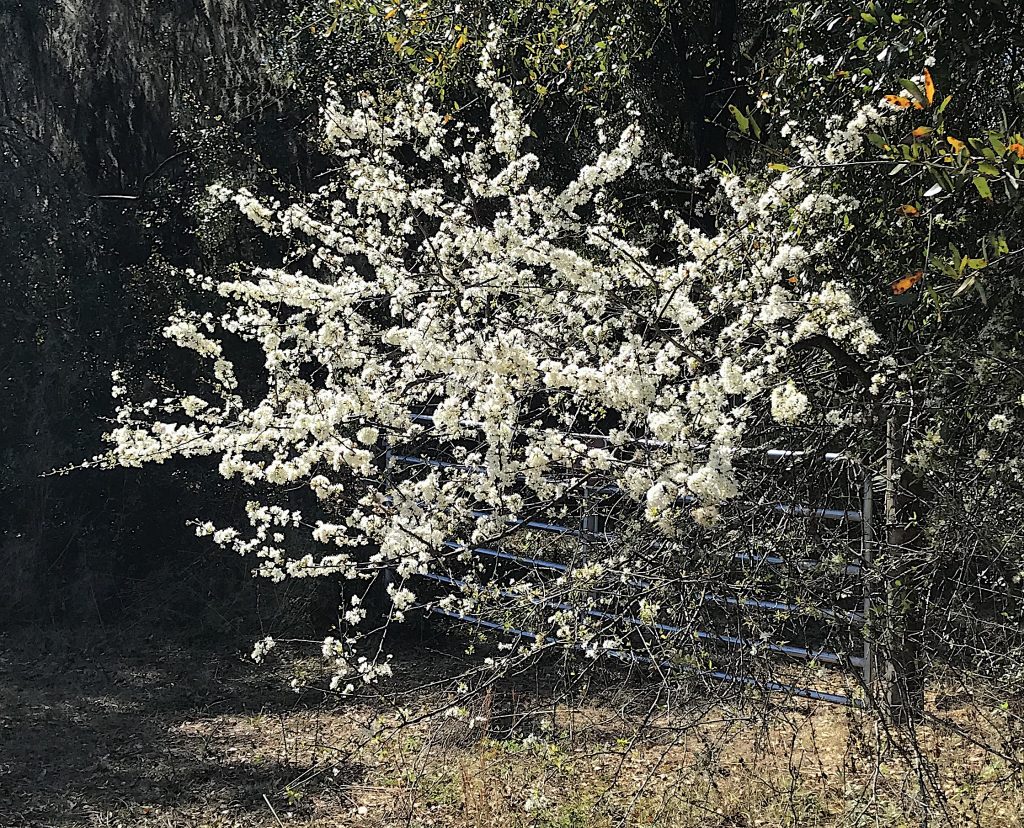
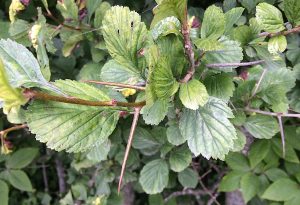
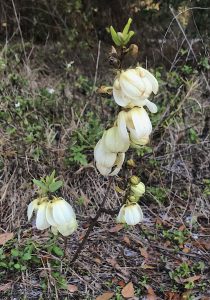

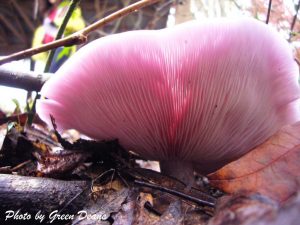
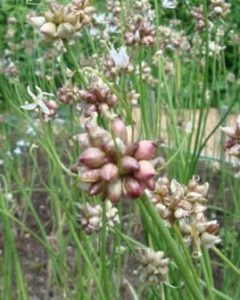
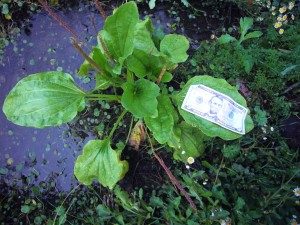


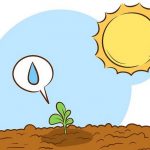 Donations to upgrade EatTheWeeds.com have gone well. Thank you to all who have contributed to either via the Go Fund Me link, the PayPal donation link or by writing to Green Deane POB 941793 Maitland FL, 32794. There are many needs left such as expanding the foraging teacher page and the page on monotypic edibles. There’s always something and such things get more complex and expensive every year.
Donations to upgrade EatTheWeeds.com have gone well. Thank you to all who have contributed to either via the Go Fund Me link, the PayPal donation link or by writing to Green Deane POB 941793 Maitland FL, 32794. There are many needs left such as expanding the foraging teacher page and the page on monotypic edibles. There’s always something and such things get more complex and expensive every year. 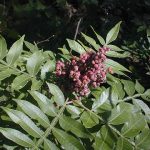

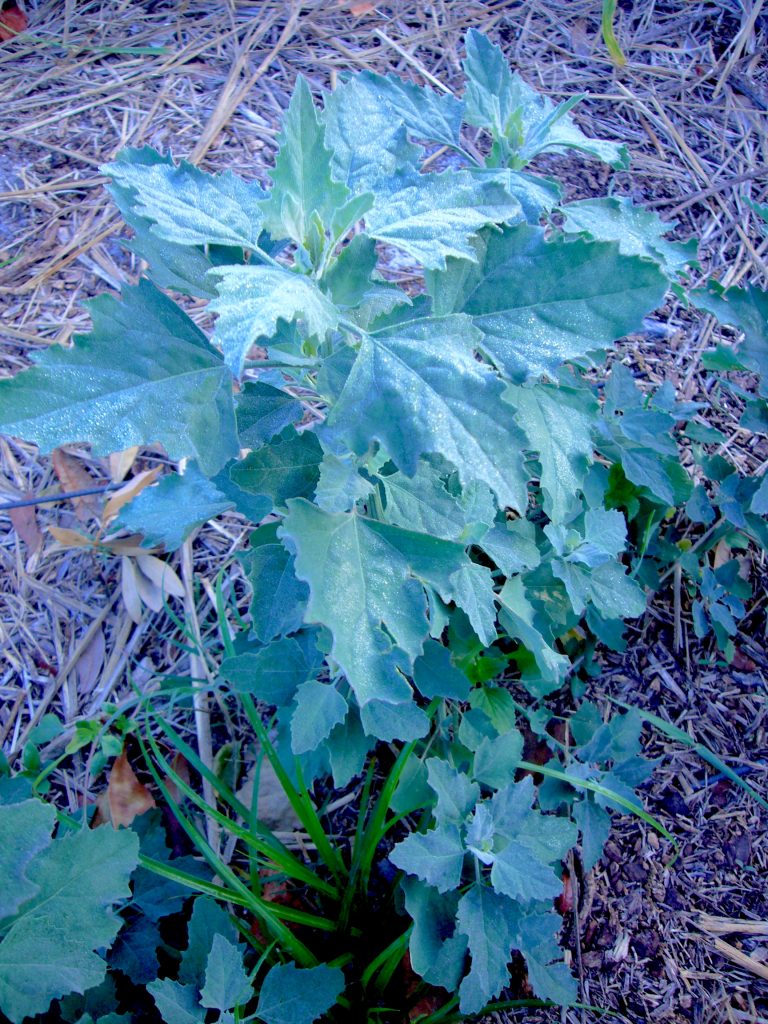
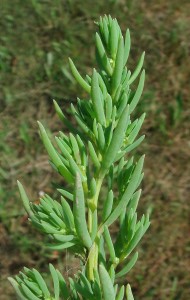
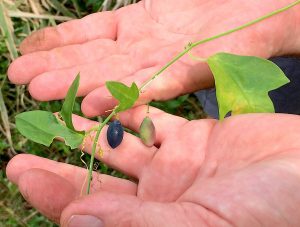
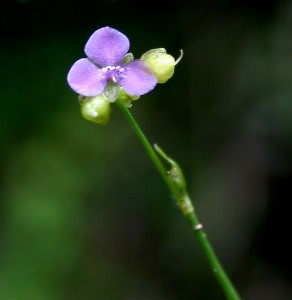
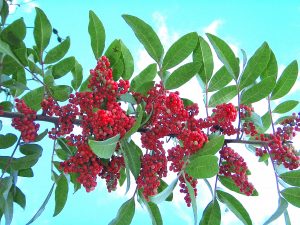
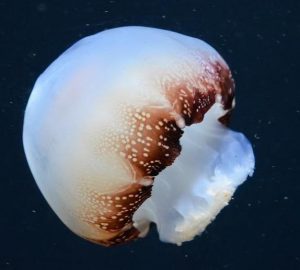
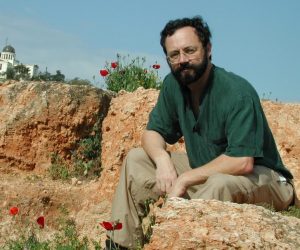

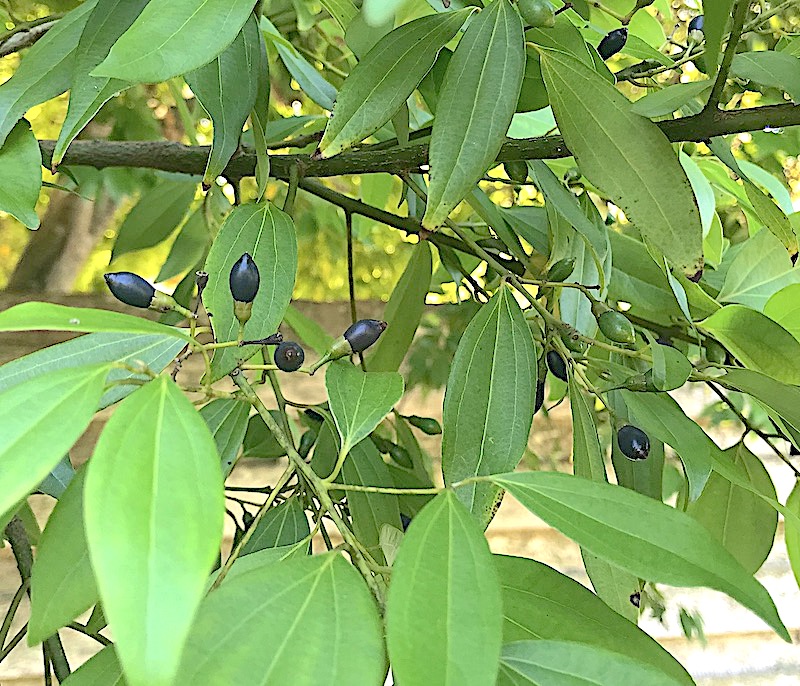
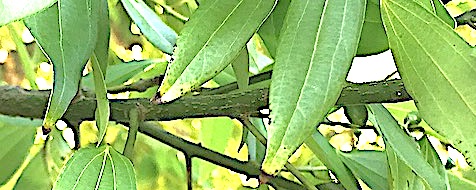
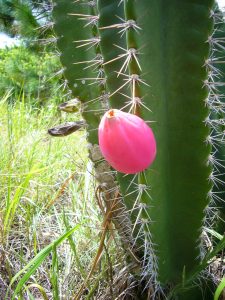

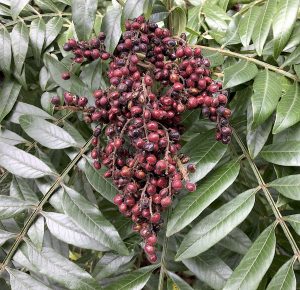
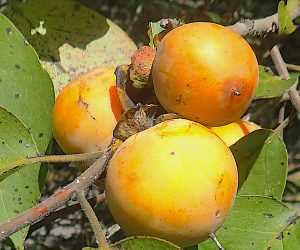
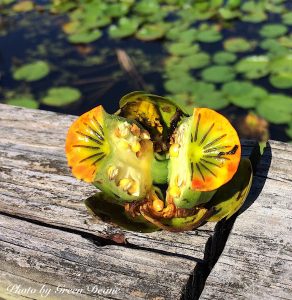

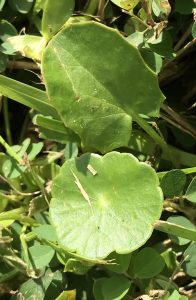 Do you recognize the edible species on the left? Both of them? If you read the Green Deane Forum you would. Perhaps you’re looking for a foraging reference? You might have a UFO, an Unidentified Flowering Object you want identified. On the Green Deane Forum we — including Green Deane and some 8,000 others from around the world — chat about foraging all year. And it’s not just about warm-weather plants or just North American flora. Many nations share common weeds so there’s a lot to talk about. There’s also more than weeds. The reference section has information for foraging around the world. There are also articles on food preservation, and forgotten skills from making bows to fermenting food.
Do you recognize the edible species on the left? Both of them? If you read the Green Deane Forum you would. Perhaps you’re looking for a foraging reference? You might have a UFO, an Unidentified Flowering Object you want identified. On the Green Deane Forum we — including Green Deane and some 8,000 others from around the world — chat about foraging all year. And it’s not just about warm-weather plants or just North American flora. Many nations share common weeds so there’s a lot to talk about. There’s also more than weeds. The reference section has information for foraging around the world. There are also articles on food preservation, and forgotten skills from making bows to fermenting food.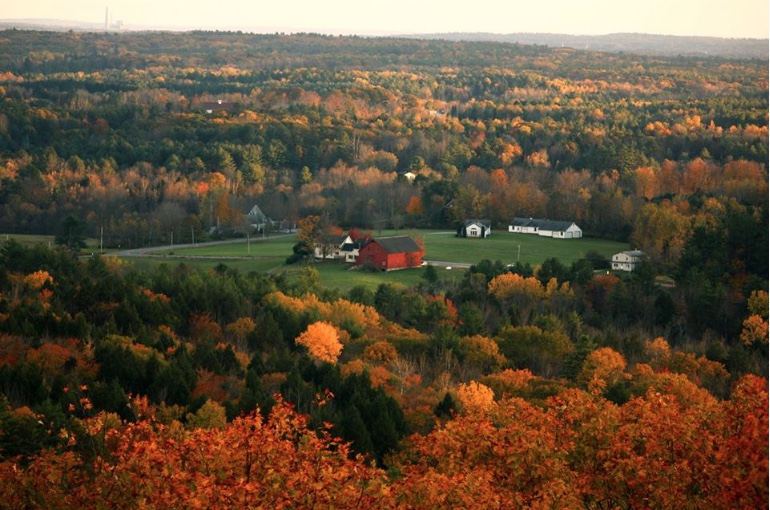
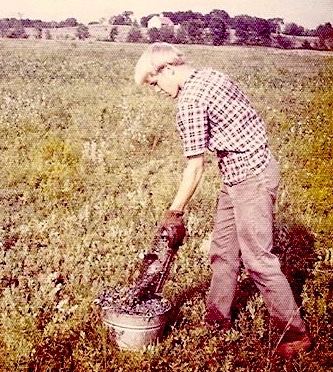

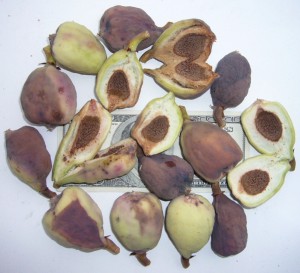

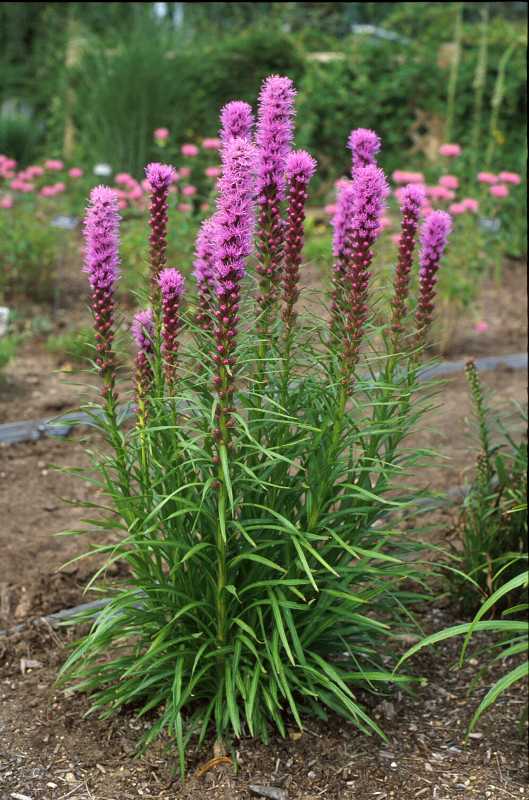
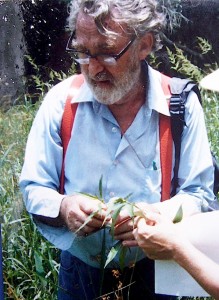
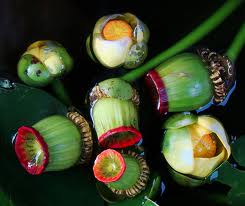
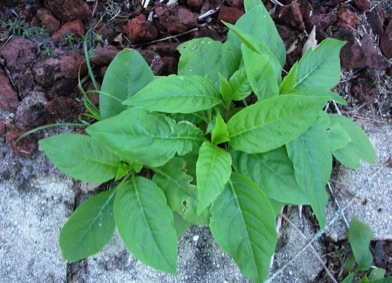
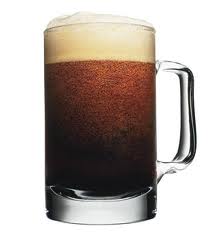
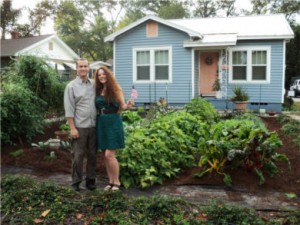

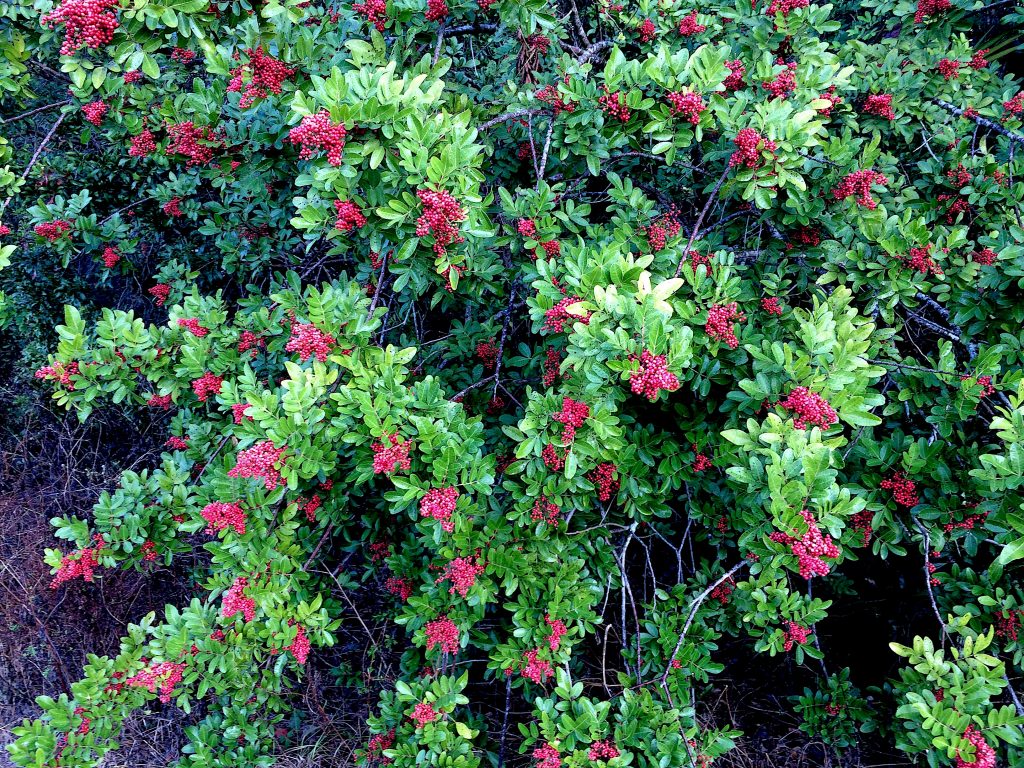
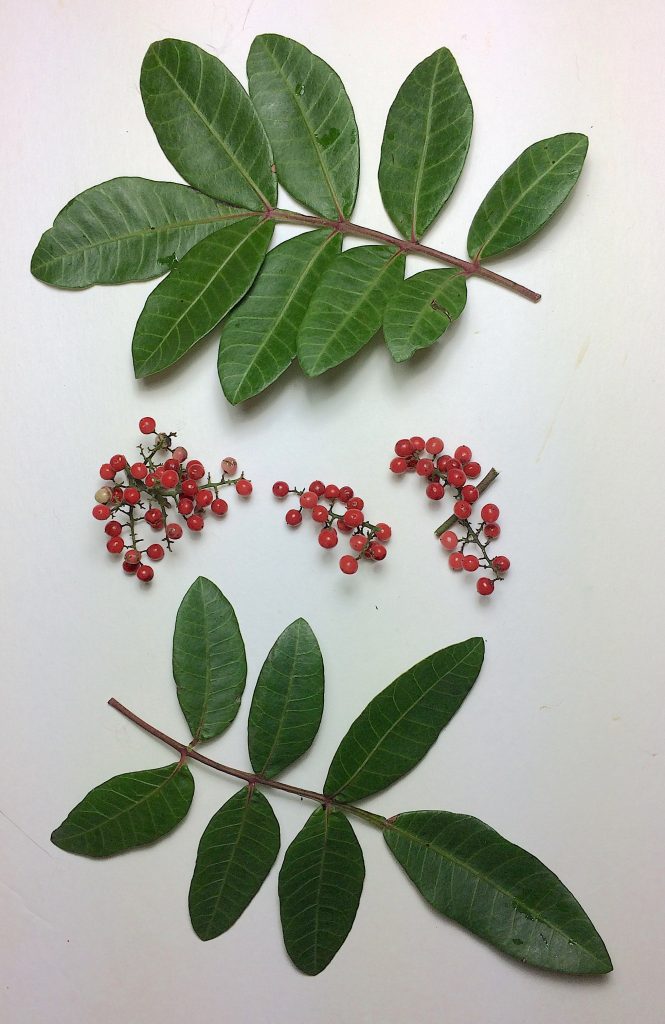
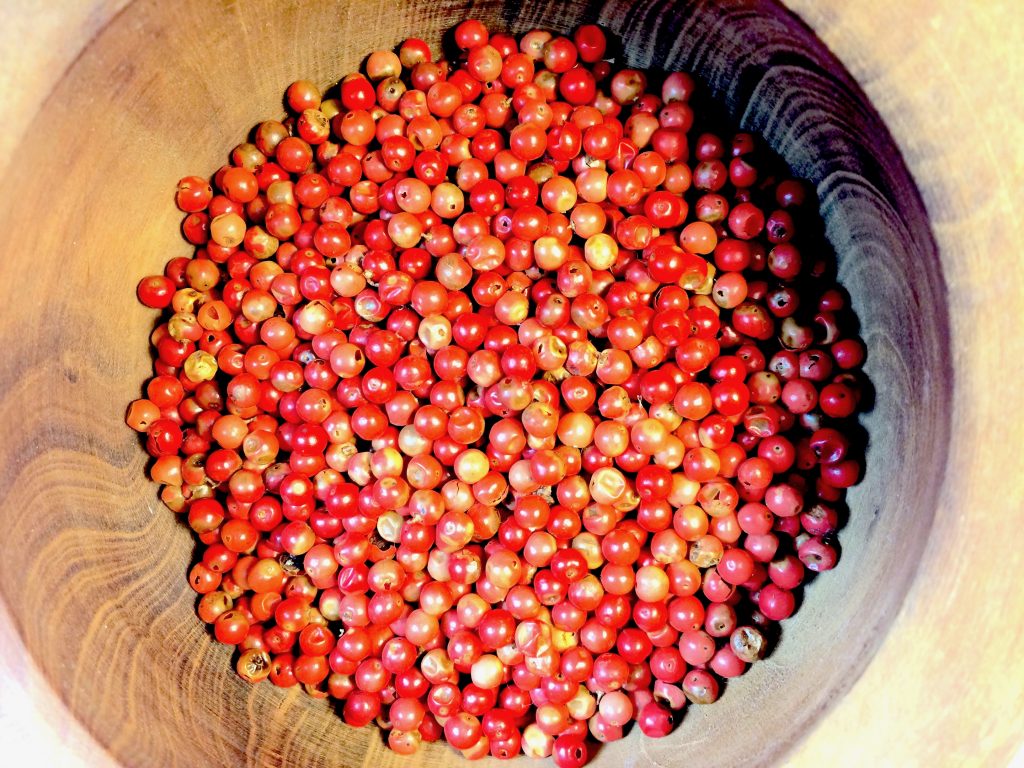
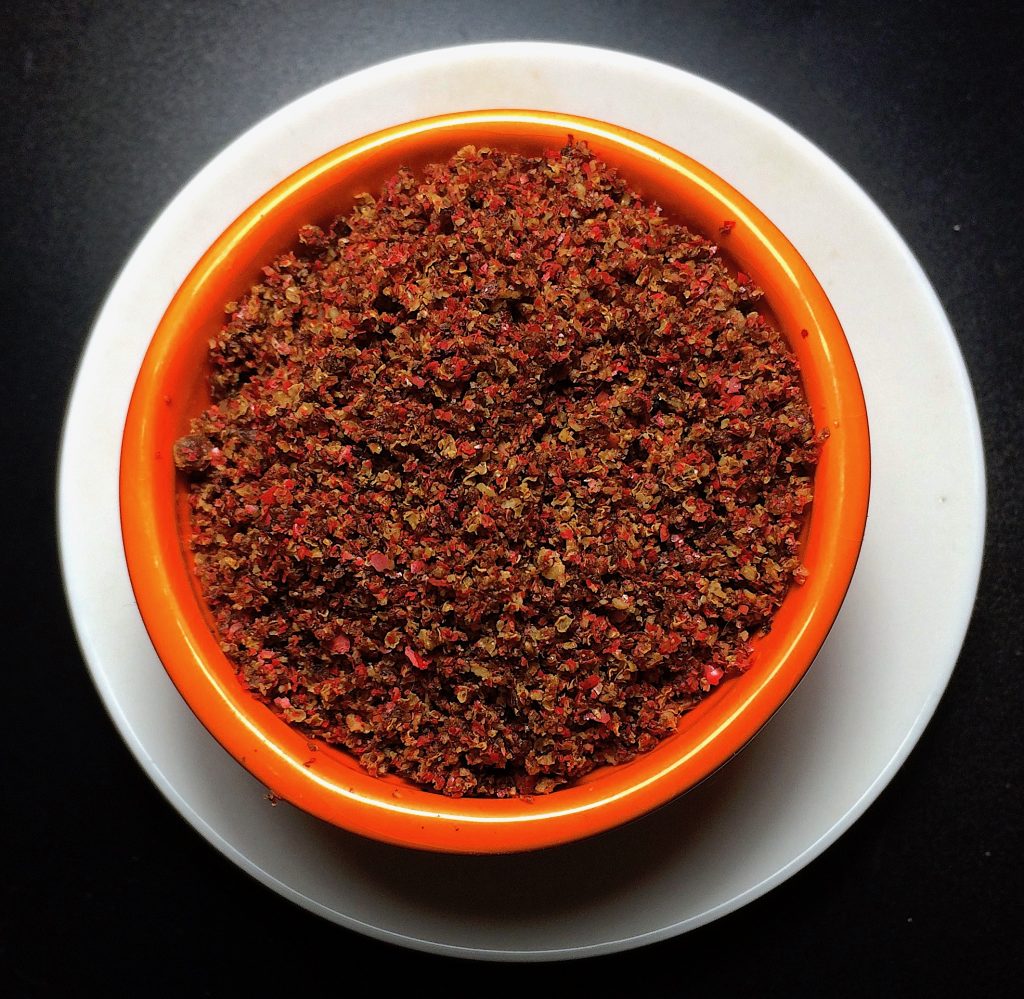
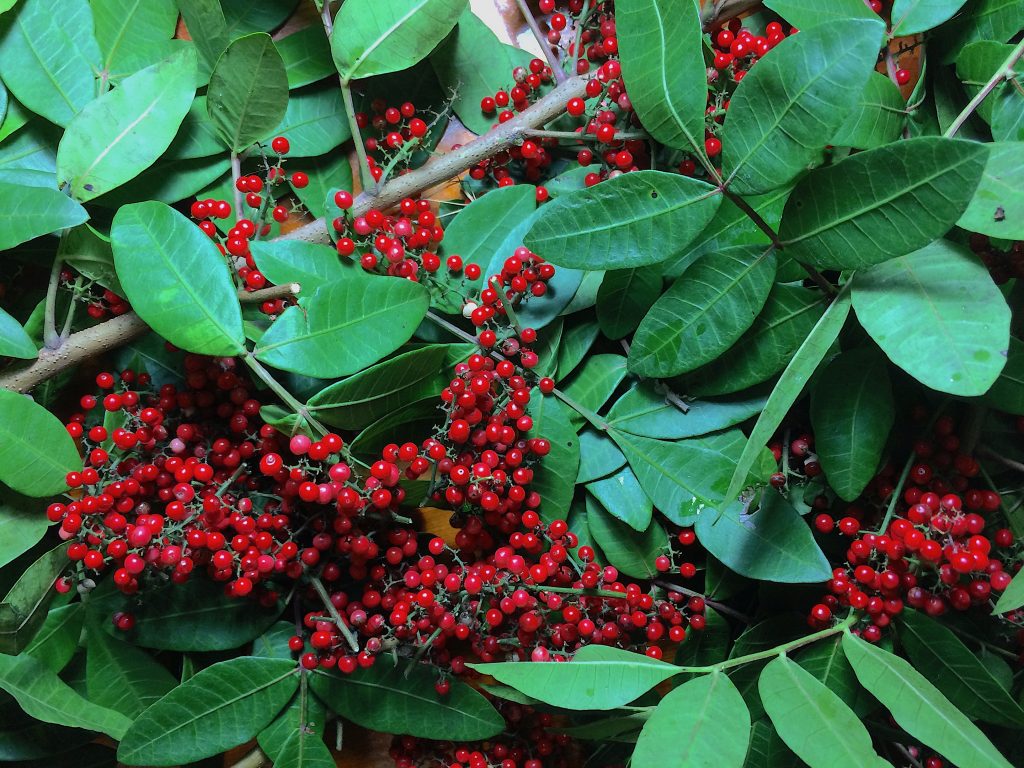
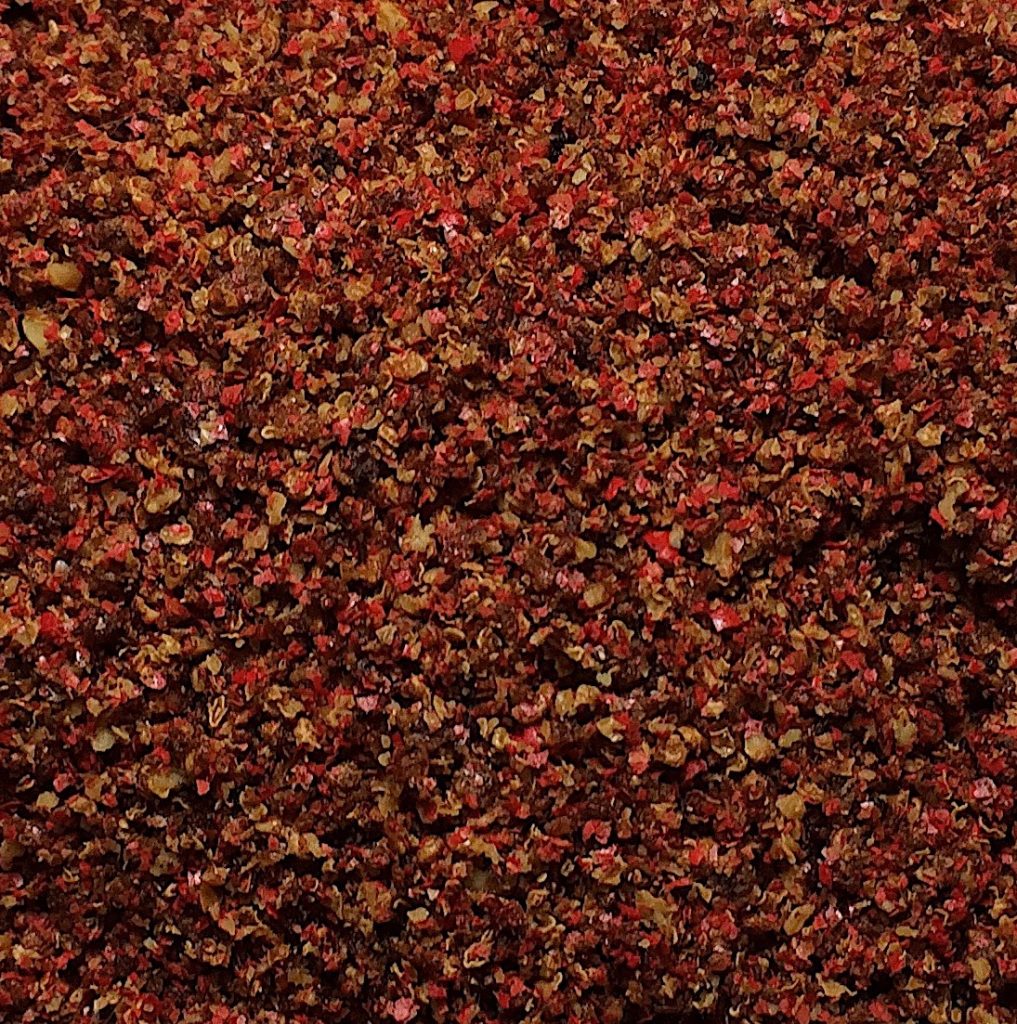
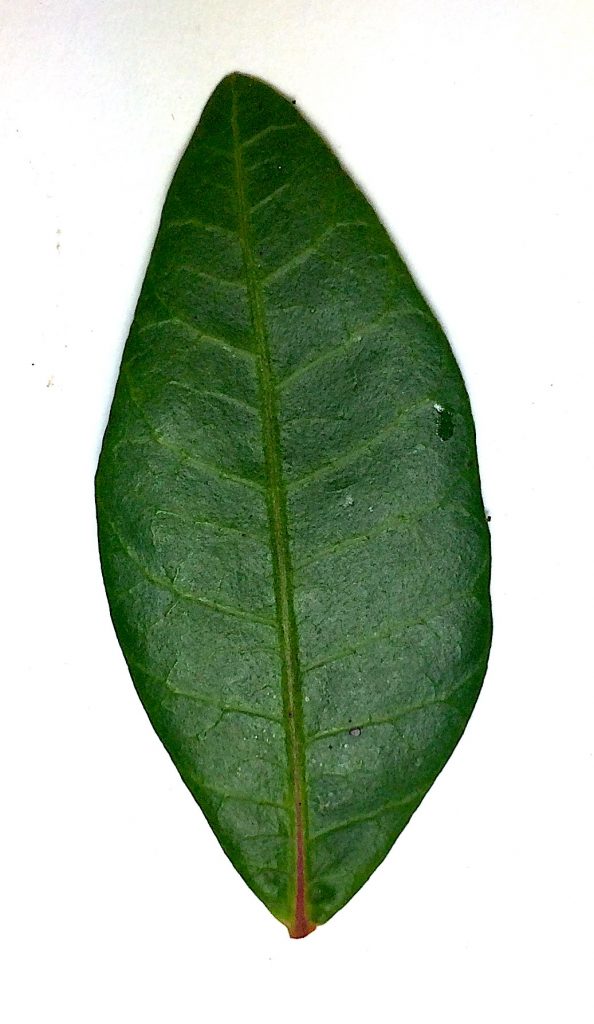
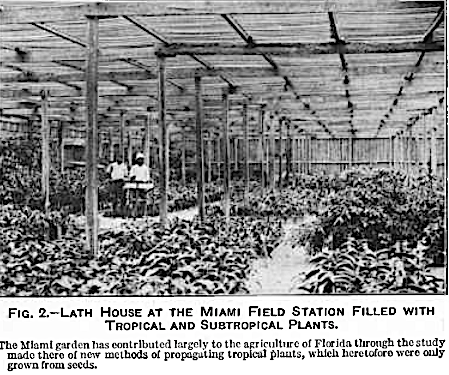
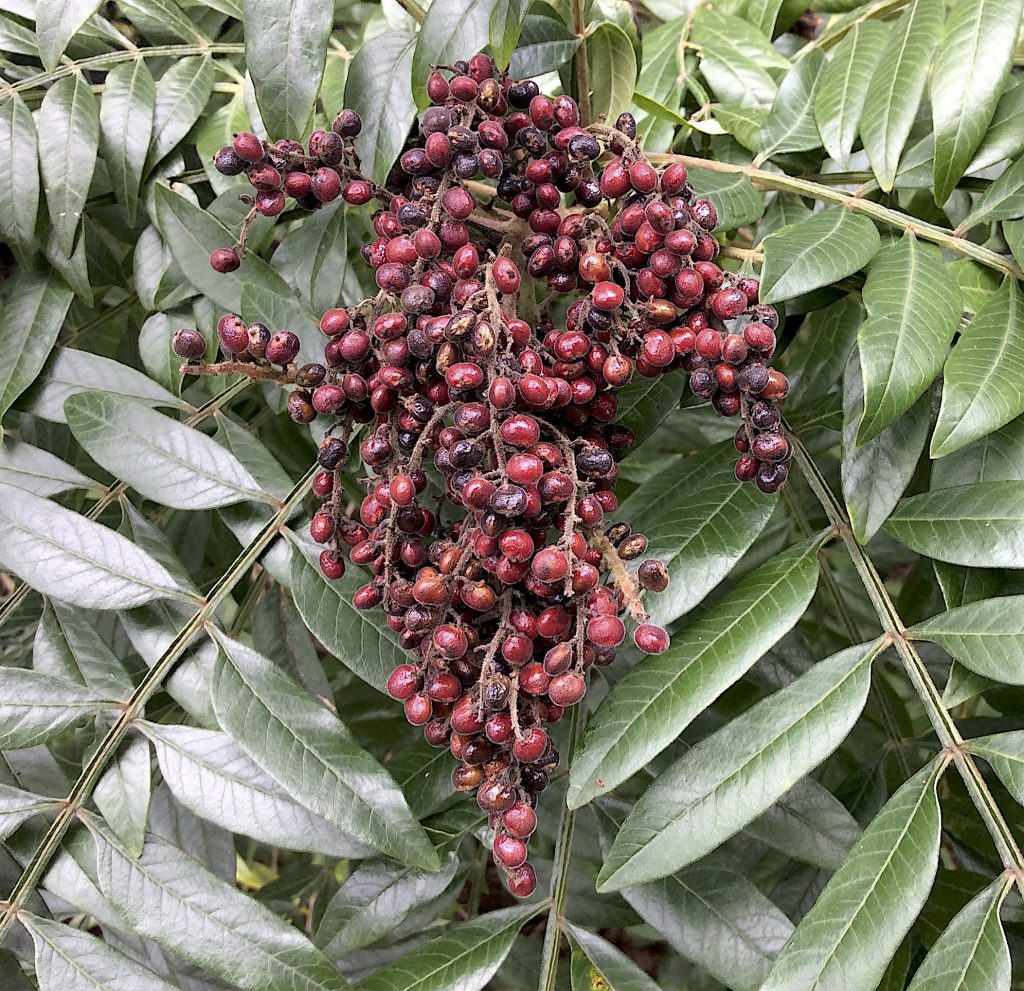
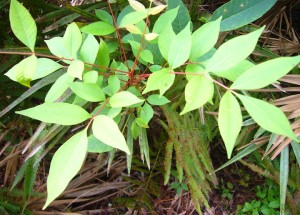
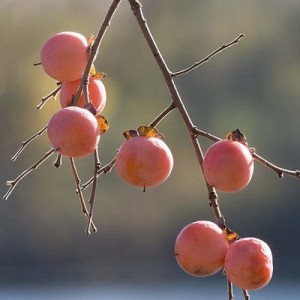 Besides the aforementioned Sumac what you should also be finding now — depending on where you live — are
Besides the aforementioned Sumac what you should also be finding now — depending on where you live — are 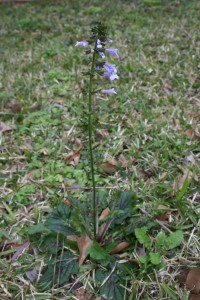
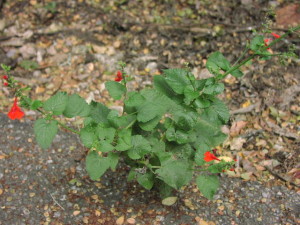
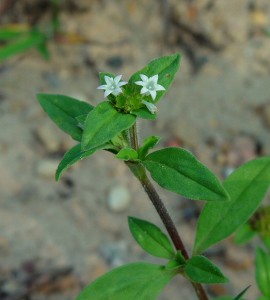
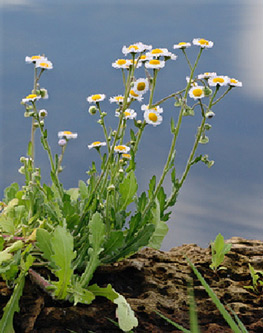

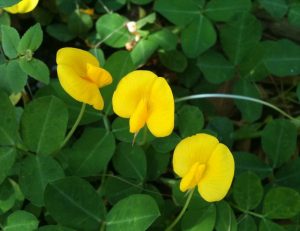
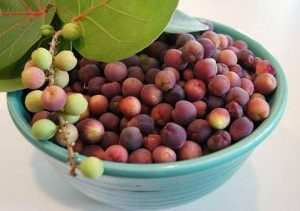 In and almost out of season depending where you are now is
In and almost out of season depending where you are now is Donations to upgrade EatTheWeeds.com and fund a book have gone well and made it past the half way mark. Thank you to all who have contributed to either via the Go Fund Me
Donations to upgrade EatTheWeeds.com and fund a book have gone well and made it past the half way mark. Thank you to all who have contributed to either via the Go Fund Me 

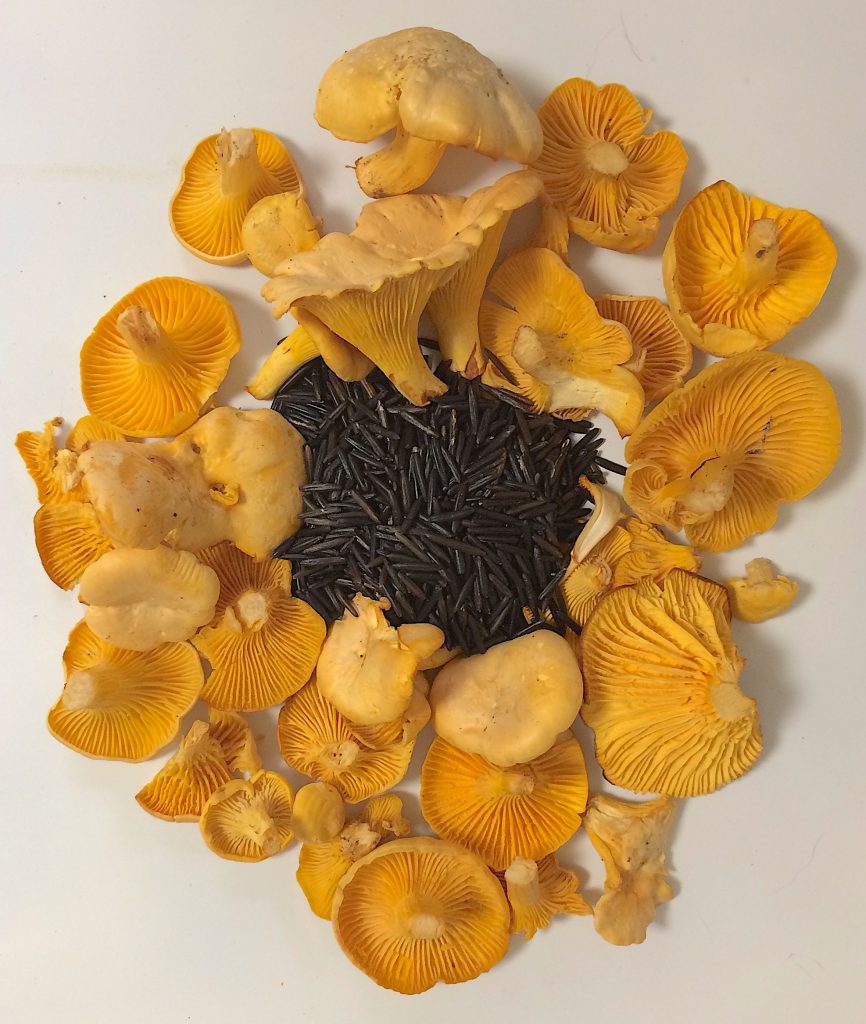
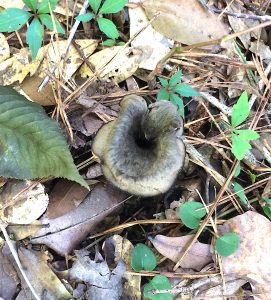
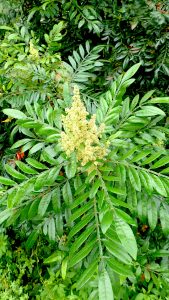
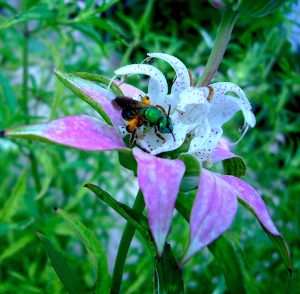

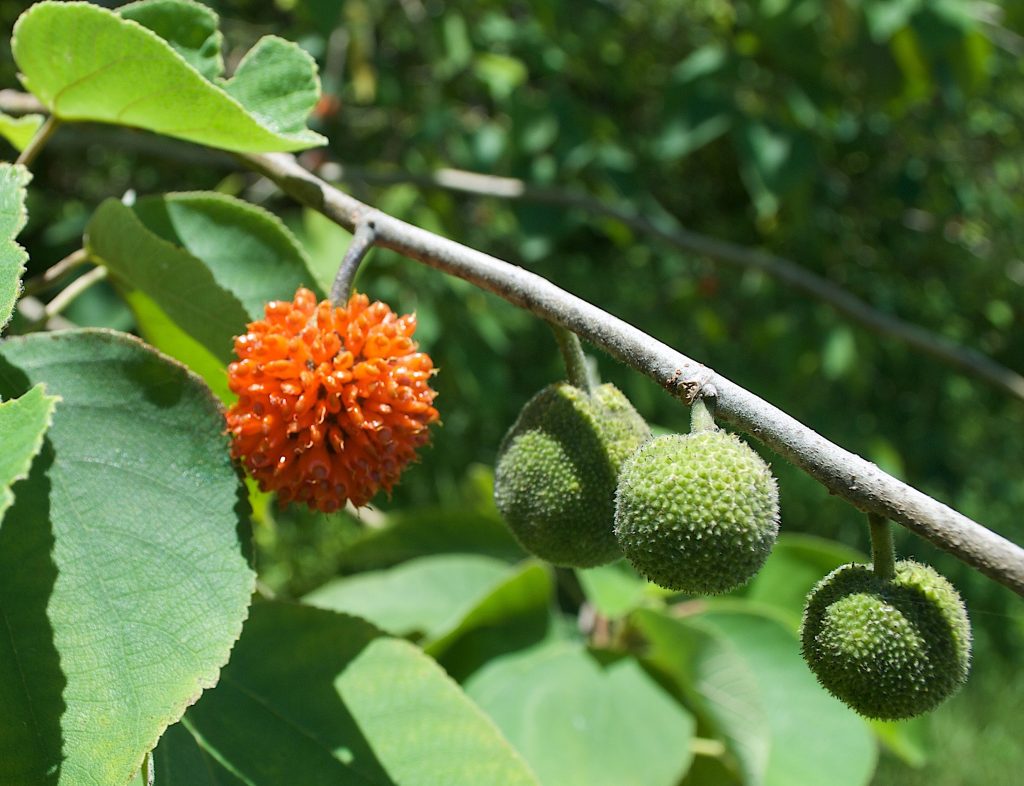
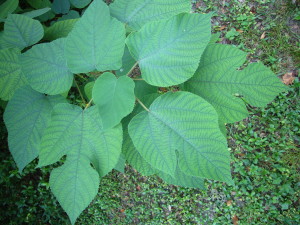
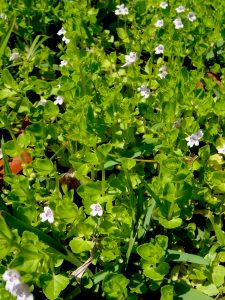
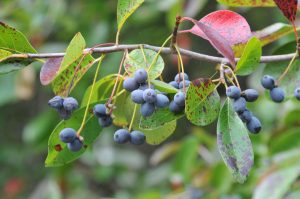
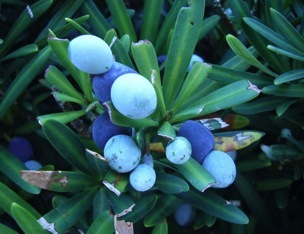 Ripening soon will be Podocarpus arils. The Podocarpus is a very common hedge plant which if ignored will grow into a pine-sized tree. The seeds are mildly toxic (and on the end) but the ripe arils are very grape-like and can be used as grapes, eaten off the bush or made into jelly and wine et cetera. The seeds are listed as toxic but I know of an adult who ate two at one time and had no issue. That said, don’t eat the seeds. When the Podocarpus fruits can be something of a guess. Locally I look for them in August. The fruit can last several weeks and are edible even when they begin to dry and look like raisins. Oddly, in a local park in downtown Winter Park, a few Podocarpus have escaped trimming and have grown into moderate-size trees. I have seen those fruit in December. You can read more about Podocarpus
Ripening soon will be Podocarpus arils. The Podocarpus is a very common hedge plant which if ignored will grow into a pine-sized tree. The seeds are mildly toxic (and on the end) but the ripe arils are very grape-like and can be used as grapes, eaten off the bush or made into jelly and wine et cetera. The seeds are listed as toxic but I know of an adult who ate two at one time and had no issue. That said, don’t eat the seeds. When the Podocarpus fruits can be something of a guess. Locally I look for them in August. The fruit can last several weeks and are edible even when they begin to dry and look like raisins. Oddly, in a local park in downtown Winter Park, a few Podocarpus have escaped trimming and have grown into moderate-size trees. I have seen those fruit in December. You can read more about Podocarpus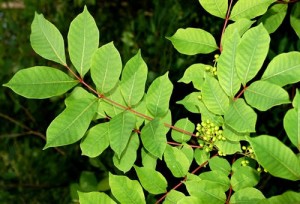 I was teaching a foraging class near a swamp, except the swamp was fairly dry compared to usual years. We came upon a taller than common Saw Palmetto, Seranoa repens. The Saw Palmetto usually grovels, grows low to the ground. I imagine this one was growing up to avoid the water that usually floods the place. Covering the Saw Palmetto were two examples of grapes that grow locally. One climbs with a single tendril and the other has a forked tendril. As usual I waded into the brush to point out the differences, after all the ground was dry. That’s when I noticed another bush in the pile, face to botanical face as it were. I knew what it was immediately which was also immediately too late. The inflorescence growing out of the axil told me all I needed to know even though the leaves were not exactly text book perfect: Poison Sumac. Ironically there was no immediate water available in the swamp to wash with so I pulled up some Dog Fennel and washed my hands with their sap. Good but not totally good enough: I got two minor rashes from it… well… one minor and one not so minor. But at least it’s just a reddening and a little swelling. No blisters. Itched a lot. Benadryl gel worked well.
I was teaching a foraging class near a swamp, except the swamp was fairly dry compared to usual years. We came upon a taller than common Saw Palmetto, Seranoa repens. The Saw Palmetto usually grovels, grows low to the ground. I imagine this one was growing up to avoid the water that usually floods the place. Covering the Saw Palmetto were two examples of grapes that grow locally. One climbs with a single tendril and the other has a forked tendril. As usual I waded into the brush to point out the differences, after all the ground was dry. That’s when I noticed another bush in the pile, face to botanical face as it were. I knew what it was immediately which was also immediately too late. The inflorescence growing out of the axil told me all I needed to know even though the leaves were not exactly text book perfect: Poison Sumac. Ironically there was no immediate water available in the swamp to wash with so I pulled up some Dog Fennel and washed my hands with their sap. Good but not totally good enough: I got two minor rashes from it… well… one minor and one not so minor. But at least it’s just a reddening and a little swelling. No blisters. Itched a lot. Benadryl gel worked well.